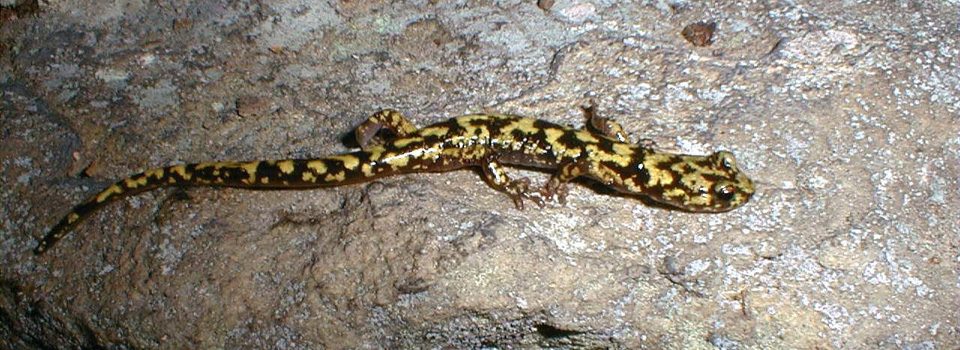
Herpetology
Current Research
Herpetofauna of Alabama – The Auburn University Museum continues to focus on generating an inventory of Alabama’s herpetofauna and monitoring the status of this rich natural resource. This project has generated a four-volume set of book manuscripts designed to replace Mount’s 1975 volume describing the state’s amphibians and reptiles. The revised books will be published by the University of Alabama Press, starting with a turtle volume (likely in 2015), a squamate volume (likely in 2016), an anuran volume (likely in 2017), and a salamander volume (likely in 2018).
Repatriation of Eastern Indigo Snakes to the Conecuh National Forest – This project is a collaboration between Auburn University, Alabama Department of Conservation, Georgia Department of Natural Resources, US Fish and Wildlife Service, US Forest Service, Zoo Atlanta, and the Orianne Society. In it, gravid females Eastern Indigo Snakes are captured in Georgia, retained at Auburn until eggs are laid, and then returned to their capture site in Georgia. The eggs are hatched at Auburn, raised to two years of age at Zoo Atlanta, and then released to the Conecuh National Forest in a longleaf restoration area. The goal is to release 300 individuals, the number that demographic models suggest is required to establish a viable population. A portion of this project constitutes the masters thesis research of Mike Wines.
Conservation of Gopher Tortoises – This project continues a long series of studies designed to determine what constitutes a tortoise population and how large a plot of land is required to maintain such a population. Current research is being conducted in collaboration with Jim Godwin and involves surveying state lands to estimate the size of current tortoise populations, with the hope of selecting sites where viable populations will be maintained in perpetuity.
Invasive Amphibians and Reptiles of Florida – This project is being conducted in collaboration with Dr. Christina Romagosa (University of Florida) and the Center for Forest Sustainability (AU School of Forestry and Wildlife Science). In it we are examining patterns of invasion of Burmese Pythons and Cuban Treefrogs. This research forms the basis of doctoral dissertation projects by Scott Goetz (Cuban Treefrogs) and Melissa Miller (Burmese Pythons).
Influence of tree phenology on cycles of abundance of leaf litter amphibians and reptiles of La Selva, Costa Rica – This project examines the prediction that cyclic patterns of abundance are generated for leaf litter amphibians and reptiles because of the cyclic pattern of leaf fall from forest trees. This research is the basis of a doctoral dissertation being performed by Brian Folt.
Effects of habitat quality, nest placement, and environmental pollutants on the sex ratio of American Crocodiles at Palo Verde National Park, Costa Rica – This project examines three possible causes of a male-biased sex ratio observed at an influential conservation site in Costa Rica. Gradual increases in nest temperature associated with global climate change, altered temperatures associated with changes in vegetation at nest sites, and release of methyl-testosterone from tilapia-farming operations all could affect sex ratio. This project is the doctoral dissertation research of Chris Murray.
Patterns of hybridization within Fowler’s Toad – This project examines whether the morphological characters used to identify putative hybrids between Fowler’s and American Toads in the field accurately reflect hybridization documented within the genome. This project is the masters thesis of Jacqui Chivers.